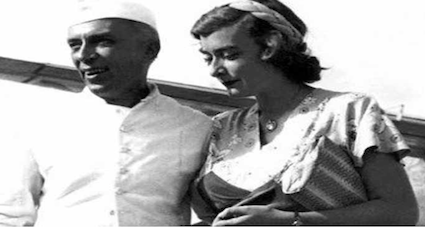(Pt. Jawaharlal Nehru died on this day in 1964. Seasoned journalist and author Vivek Shukla, a walking encyclopaedia on Delhi, brings out some nuggets involving India’s first prime minister.)
As you move from Janpath to Motilal Nehru Road, you are hemmed in by big bungalows on both sides of the road. One of them is 17, Moti Lal Nehru Road ( earlier York Road) in the heart of Lutyen zone. Well , it is not just another bungalow. This was the first official residence of Pt. Jawaharlal Nehru when he came to Delhi to head the interim government in 1946. He lived there till August 1,1948 before he moved to Robert Tor Russel-designed Teen Murti house. When India got freedom on August 15,1947, Pt.Nehru went to Red Fort to address the nation from 17 York Road house only.
Author and journalist Somnath Dhar, who was part of Nehru’s staff for a few months, in his book ‘From Partition To Operation Bluestar : Tales Of A Journalist,Bureaucrat, Spy’, claims:
“17 York Road was used as his (Nehru’s) headquarters during the whole period of negotiations for India’s independence. Once India got freedom from the vice-like grip of British government, communal riots broke out in different parts of the country. Refugees from Punjab were pouring in Delhi. They had many grudges and grouses against the government for not ensuring their safety. Yet, 17 York Road remained unguarded and anybody could walk into the main hall of the house, which was used as the reception room. Considering the scary present times we live in, it looks impossible that anybody can enter the house of a top leader so easily and without frisking. In 17 York Road, no entries had to be made in any register, no names were asked — people just walked in and out at will.”
Nehru and Edwina Mountbatten
Author Som Nath Dhar says, ” I was working in Prime Minister house, one day, there was another call for Nehru from Sir Girija (Sir Girija Shankar Bajpai, the secretary-general of the external affairs ministry), but I could not find Panditji anywhere. Sir Girija said he needed to talk to Nehru urgently, so I should get him to call back as soon as possible. … I went looking for him there and came upon Nehru and Lady Edwina Mountbatten sitting close together under a tree in a somewhat secluded part of the garden. As I came running up, they quickly pulled apart and Lady Edwina let out a muffled cry. Nehru calmed her down, telling her not to worry. I gave Panditji the message. He looked up at me and said, “Main baat karta hoon aapse.”
While staying at 17 York Road, Pt Nehru used to visit Birla house at 5 Albuquerque Road ( now Tees January Marg) very often to meet Mahatma Gandhi. Of course both these places are closely situated. Sometimes he held his cabinet meets of his interim government at this venue only. Such meetings used to be attended by the likes of Sardar Patel, Babu Jagjivan Ram, Liaquat Ali Khan, who later became the first Prime Minister of Pakistan, among others.
Rebuking Mathai
It is said that when communal tension gripped Delhi post independence and angry Punjabi refugees pouring here in hordes, M. Mathai, personal assistant to Nehru, asked Delhi police to guard the PM house house in a better way. The cops swiftly set-up their tents, both inside and outside the house of Nehru. When Nehru came to know about this development, he asked cops to remove tents without any delay. Nehru was not ready to listen to the arguments of his Malyali personal assistant. He was of the view that anybody can enter his home without any problem.
Lunch with local Kashmiris
This house had seen many informal get-togethers between Pt. Nehru and Kashmiri community of Delhi. A very vibrant Kashmiri community was settled in old Delhi since long. A very large number of Kashmiri pandits had shifted to Delhi and other places like Agra and Allahabad between 1850 to 1900 from their homeland. Among them were the Kunzrus, Haskars, Rehus, Dars, Takrus,Kauls, Zutshis, Katjus and Rainas. The elders of Kamala Nehru too migrated to Delhi during those years. They built their big havelis in Sitaram Bazar in the Capital. Some of the havelies of those Kashmiris are still there in Sita Ram Bazar and Gali Kashmiriyan area.
The descendents of those Kashmiri migrants speak Hindustani, not Kashmiri. Yet, they still prefer home cuisines like wazwan etc. According to Urdu poet late Gulzar Zutshi Dehlvi, “ Even though Nehru was not born in Kashmir, he was a Kashmiri by heart. He loved anything and everything of Kashmir. The local Kashmiri community used to organise mouth-watering lunches at his place after his consent. Both Hindu and Muslim Kashmiris based in Delhi used to attend those get-togethers,” adding “ Guests were served both non-vegetarian as well as vegetarian dishes from Kashmir. They were prepared by local Kashmiri cooks.” Dehlvi passed away in 2021. He was a senior statesman of his community in Delhi.
It is also said that Pt. Nehru never visited his in-law house in old Delhi while living at York Road or at Teen Murti Bhawan even though it was just couple of miles away from these places.


